The Nho Que River leaves a strong impression, especially in the hearts of travel enthusiasts whenever they have the opportunity to visit Ha Giang and admire the majestic work of nature. Join Vn Car Rentals’s for a tour around the Nho Que River to experience this incredibly emotional beauty.
Table of Contents
Introduction to the Nho Que River and Tourism in Ha Giang
With its poetic landscapes and majestic mountains, the Nho Que River has become one of the symbols of the Ha Giang stone plateau region. The Nho Que River is a tributary of the Gam River, with a length of 192 km. It flows through layers of rugged rocky outcrops, sometimes hidden, sometimes revealed amidst the towering cliffs that seem to reach the sky. The Nho Que River captivates travelers with its picturesque yet grandeur beauty. Additionally, its emerald green waters have earned it a place on the list of Vietnamese historical sites and scenic landscapes by the Ministry of Culture, Sports, and Tourism. When visiting the Nho Que River, travelers can immerse themselves in the majestic nature, relax on boats while enjoying the sky, and capture unique and beautiful photographs in this breathtaking setting.
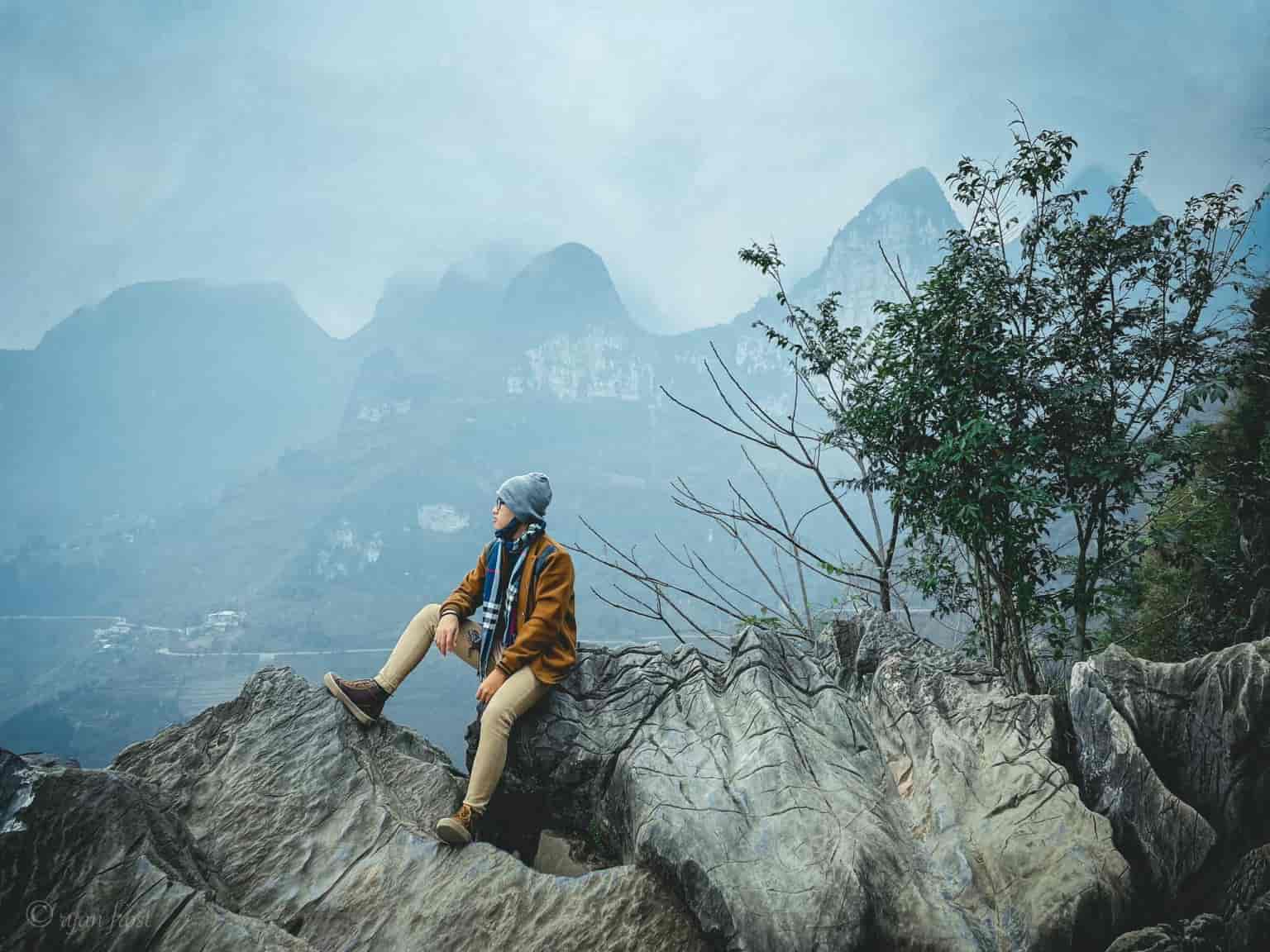
Ha Giang is home to many stunning natural attractions, such as Ma Pi Leng, the triangular flower fields, and the Nho Que River. It is increasingly becoming a preferred destination for tourists, especially those who seek tranquility and a close connection with nature. The region’s delectable cuisine is also a major draw for Ha Giang. When visiting Ha Giang, tourists not only get to admire picturesque landscapes but also savor delicious and enticing local specialties such as beef, buffalo hotpot, thang co (a traditional dish), Bac Me bamboo rice, and corn wine. If you have the opportunity to travel to Ha Giang, don’t forget to bring your camera to capture the beautiful moments; it will undoubtedly be a rewarding and memorable experience.
Where is the Nho Que River Located?
- Location: Seo Lung Village, Lung Cu and Ma Le Communes, Dong Van District, Ha Giang Province
The Nho Que River is situated in Son Vi Commune, Meo Vac District, Ha Giang Province. This commune is located near the border with China and is surrounded by majestic mountains and lush forests, providing travelers with a sense of peace and tranquility. If you wish to eat or buy essential items, you can visit the local market in the commune, which is quite spacious and specializes in selling clothing, food, and beverages.
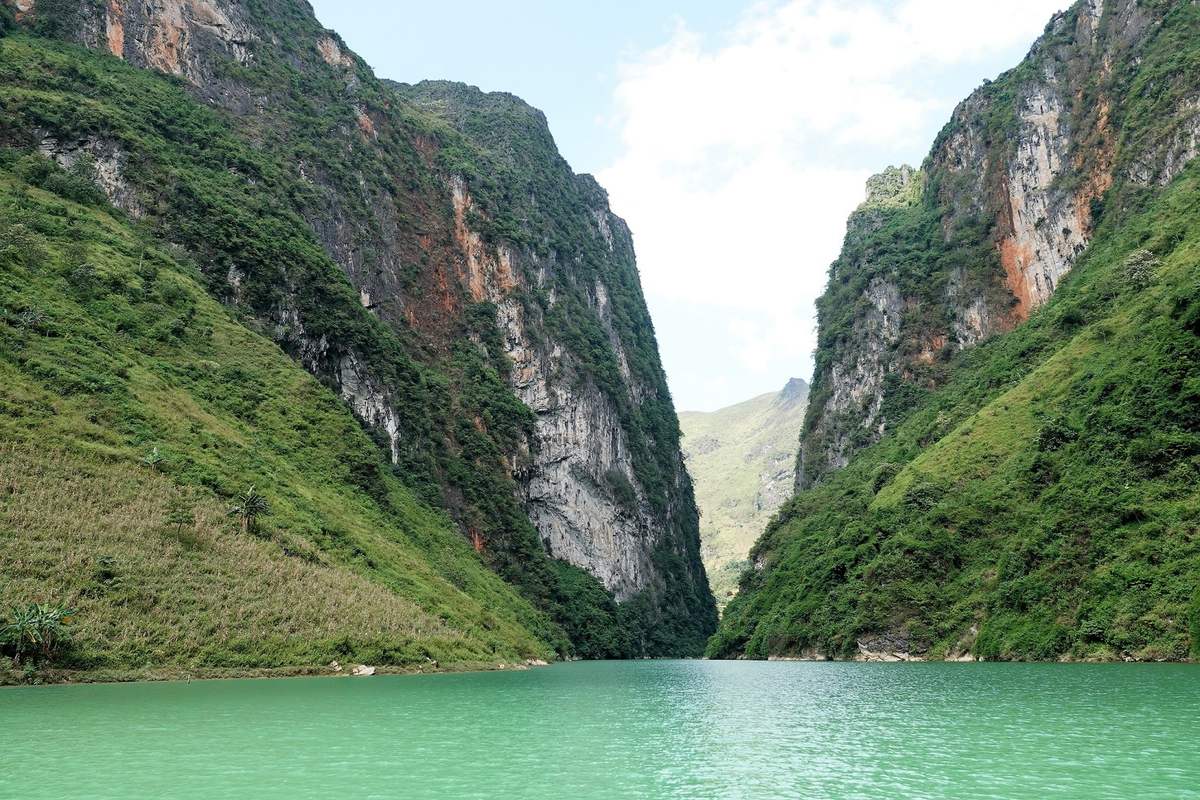
If the hustle and bustle of city life becomes too overwhelming, consider packing your backpack and embarking on a journey to Son Vi Commune to experience a new, less hectic way of life in this peaceful land where the beautiful and picturesque Nho Que River is located. This will undoubtedly be a memorable experience and a refreshing challenge to help you find balance and inner peace. Wash away your worries and troubles, and don’t forget to bring your camera to capture these serene moments in this beautiful land.
The Historical Origin of the Nho Que River
Few people are aware of the origins and the mysterious history behind the captivating and alluring beauty of the Nho Que River. The story is told that in the early days of Earth’s formation, before the arrival of humans and when everything remained untouched, a peculiar event took place. A silent war occurred in the heavens between the River God and the Mountain God, and it unfolded like this: back then, the mountain was still whole and undivided, and water from above flowed down continuously, causing frequent flooding. The River God came up with a solution, suggesting that the Mountain God should shift to one side so that the water from this side of the mountain could flow into the other side. However, the Mountain God refused to cooperate and continued to sleep, as if nothing would come of it. But, by a stroke of luck, one stormy night with thunder and lightning, the divine lightning cut through the darkness. After a thunderous boom, the Mountain God was split in two. Water from one side of the mountain surged into the other side, and, overnight, the formerly dry and barren side of the mountain was covered in lush, vibrant greenery.
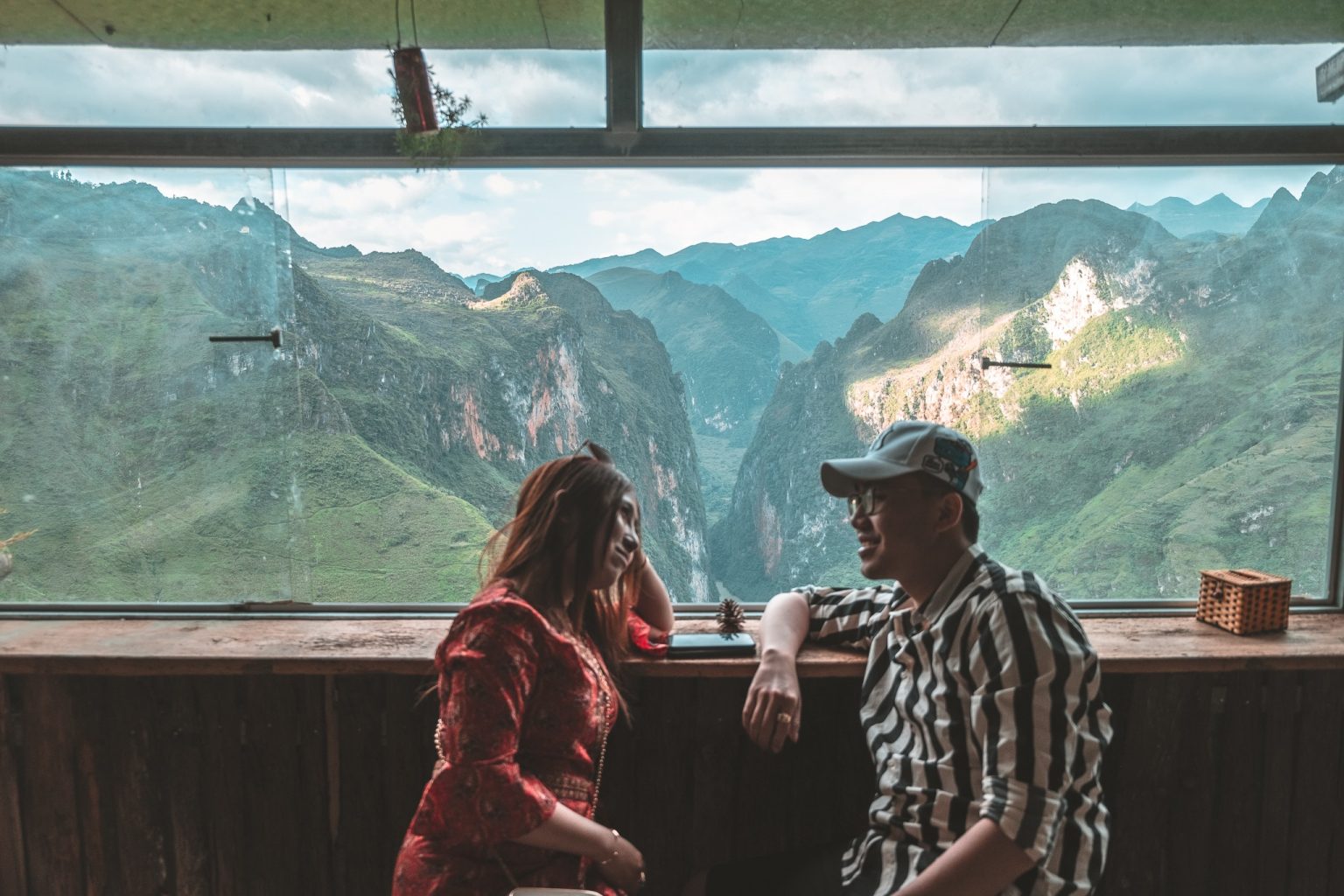
From that moment on, water continued to flow through the steadfast mountain’s rocky terrain, coming together to form the Nho Que River, splitting the Ma Pi Leng Pass and the Săm Pun mountain range. Thanks to this division, travelers are able to explore and admire countless landscapes, both wild and intense, yet also gentle, along the emerald green Nho Que River.
When to Travel to the Nho Que River
If you’re visiting Ha Giang and you overlook a trip to the Nho Que River, you’ll be missing out on something truly remarkable. With its picturesque yet majestic, mysterious beauty, and considered one of the icons of Ha Giang, the Nho Que River is a place you must set foot in at least once. So when is the best time to visit the Nho Que River?
Typically, the best time to travel to the Nho Que River is in October and November because the weather in Ha Giang becomes cooler during this period. It’s also the time when the triangular flower fields are in full bloom in Ha Giang. Visiting during these months, you’ll have an amazing journey, allowing you to enjoy the beautiful landscapes and capture artistic photographs.
Transportation Options for Traveling to the Nho Que River
Bus
For travelers in Hanoi, you can choose to travel to Ha Giang by bus, with a fare of 250,000 Vietnamese Dong for a one-way trip. Simply go to the My Dinh bus station and take a bus from the Hung Thanh or Hai Van bus companies, which operate from 7 to 10 pm. Once you arrive in the center of Ha Giang, you can use a motorbike taxi or a regular taxi for safety when traveling to Nho Que.
For travelers from the Central and Southern regions of Vietnam, it’s advisable to purchase plane or train tickets to Hanoi and then take a bus to Ha Giang.
Private Tourist Vehicles
Private tourist vehicles are suitable for families, groups of friends, and international tourists. With this service, you have the flexibility to set your own schedule and can rest or visit points of interest along the way to Ha Giang.
If you’re looking for an exciting travel program without worrying about transportation, VnCarRentals.com is ready to accompany you on your journey to Ha Giang. With an experienced team of drivers and a variety of vehicle options, we provide private car rental services from 4 to 16 seats, aiming to ensure the utmost comfort and safety for our customers. Book your private car rental service from Hanoi to Ha Giang today to arrange a detailed itinerary.
Motorbike
A popular alternative to buses, which is also becoming a trend, is motorbike travel to the Dong Van Karst Plateau. Traveling by motorbike allows you to have full control of your journey and the freedom to admire the beautiful scenery along the way. However, it can be quite dangerous. Depending on the route you choose, the journey can take from 8 to 10 hours. Before selecting this mode of transportation, ensure you are well-prepared with the necessary equipment for adventure travel and travel with a group for safety.
Places to Visit and Experience When Traveling to the Nho Que River
Traveling to the Nho Que River offers not only the opportunity to admire the breathtaking scenery but also a chance to experience various exciting activities. Here are some fun activities you should try when visiting the Nho Que River:
Check-In at Tu San Alley
If you’re on a boat to explore the Nho Que River, be sure to ask the boatman to stop at the Tu San Alley. This is the deepest gorge in Southeast Asia, with a depth of 1000 meters, and it serves as the natural border between Dong Van and Meo Vac districts. Tu San Gorge’s beauty is awe-inspiring, leaving many people both fearful and in awe of its grandeur and mesmerizing depth. Whether you look down from above or up from below, you’ll feel overwhelmed and astonished by the incredible power of nature.
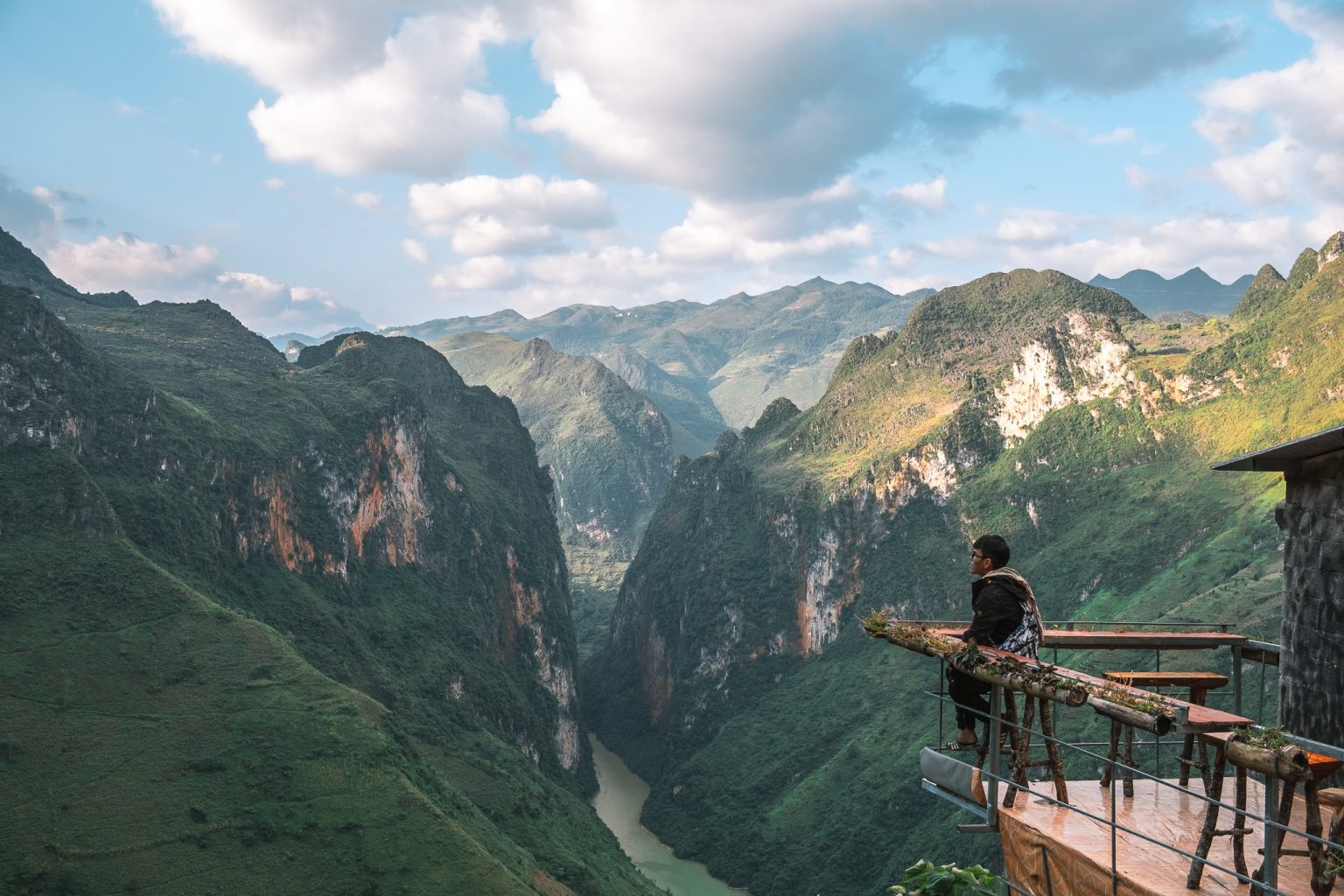
Admire the Panoramic View of the Nho Que River from the Peak of Ma Pi Leng
The Nho Que River is often described as a glistening green thread descending from the heavens and winding its way through the northeastern mountains. To truly appreciate and witness the unique beauty of the Nho Que River, you should visit the peak of Ma Pi Leng, known as the “clouds underfoot, sky against the forehead.” From the summit of this mountain, you’ll see the Nho Que River, which not only resembles a green thread but also looks like an enormous green snake. It meanders between the obstacles of two towering mountain cliffs, piercing through layers of clouds and reaching towards the sky.
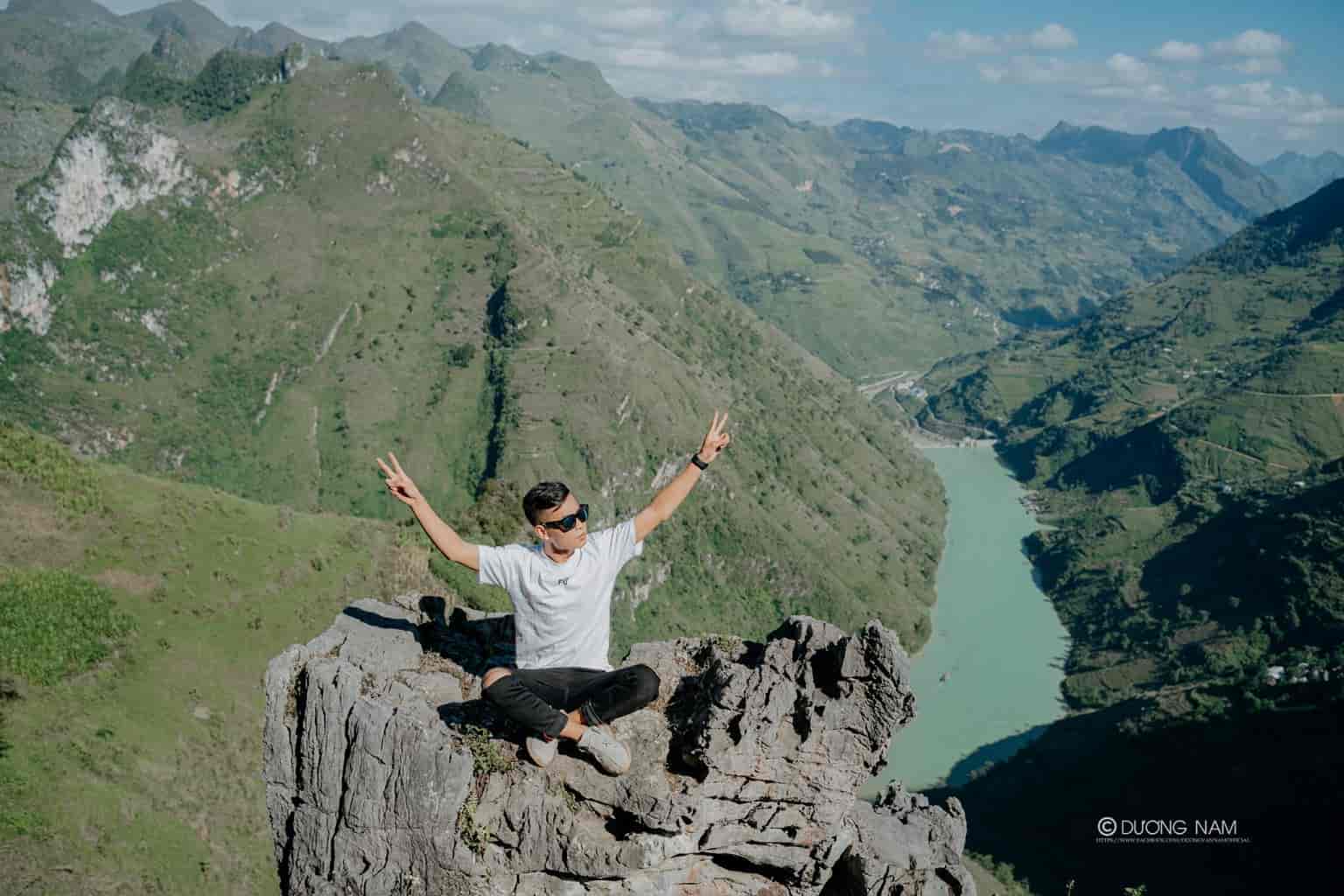
Standing atop Ma Pi Leng, you can capture the entire panorama of the Nho Que River, and you’ll also have the opportunity to experience and admire the most breathtaking beauty of the Nho Que River.
Admire the Buckwheat Flowers
The best time to visit the Nho Que River is in October and November when the weather in Hà Giang becomes cooler and more pleasant. During this period, the Nho Que River not only becomes greener and more refreshing, but the landscapes along both sides of the cliffs also become unique and enriched with new features. Among these features, the buckwheat flowers stand out, symbolizing Hà Giang during October and November, and they are beloved by many travelers.
Tourists can take memorable photos and appreciate the beauty of the white buckwheat flowers along the road leading to the river. There are spectacular and eye-catching white buckwheat flower fields along the way, making it an excellent spot for photography.
Boating on the River
Known as the most beautiful river in the Hà Giang stone plateau, with its emerald green waters winding between the towering and rugged cliffs. Moreover, both sides of the cliffs are covered with lush green forests, adorned with various shades of white and red from wildflowers, making the already beautiful Nho Que River even more breathtaking. Therefore, paddling a kayak while casually holding a camera to capture the scenery results in charming photos. This is also one of the enjoyable activities that many tourists engage in anytime, anywhere while traveling.
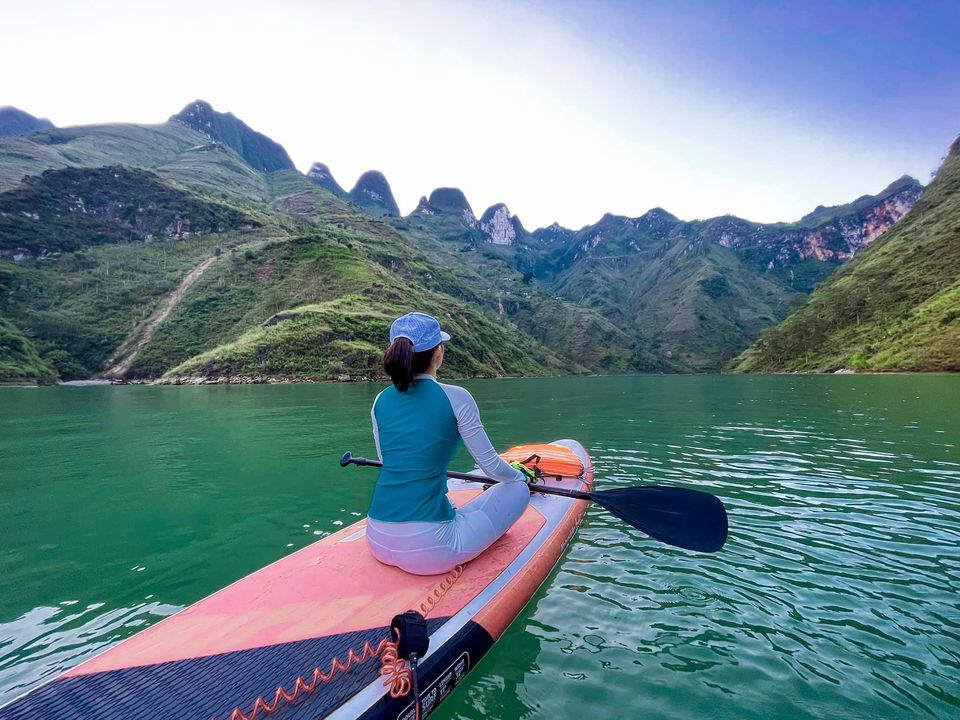
Admire and explore the beauty of the Death’s Cliff
Along the road to the Nho Que River, there is a place called the Death’s Cliff. This place is quite dangerous, so for every tourist group, stopping for photos is not allowed here, and you can only admire and take photos as you pass by. However, you’ll be amazed by the treacherous nature and height of this cliff. Looking up from below, you’ll be astonished, and it’s certain to be horrifying if anything were to fall from the mountain. Nevertheless, despite the warnings, many tourists on kayak trips do stop and take beautiful photos. For safety reasons, it’s still better to follow the rules of the tourist area.
Check-in while kayaking between the two towering cliffs along the river
When people mention the Nho Que River, they immediately think of its stunning landscapes, especially the two steep cliffs. This is one of the most beautiful check-in spots for tourists. Whether you take horizontal, vertical, or upward photos, all of your pictures will be unique and artistic.
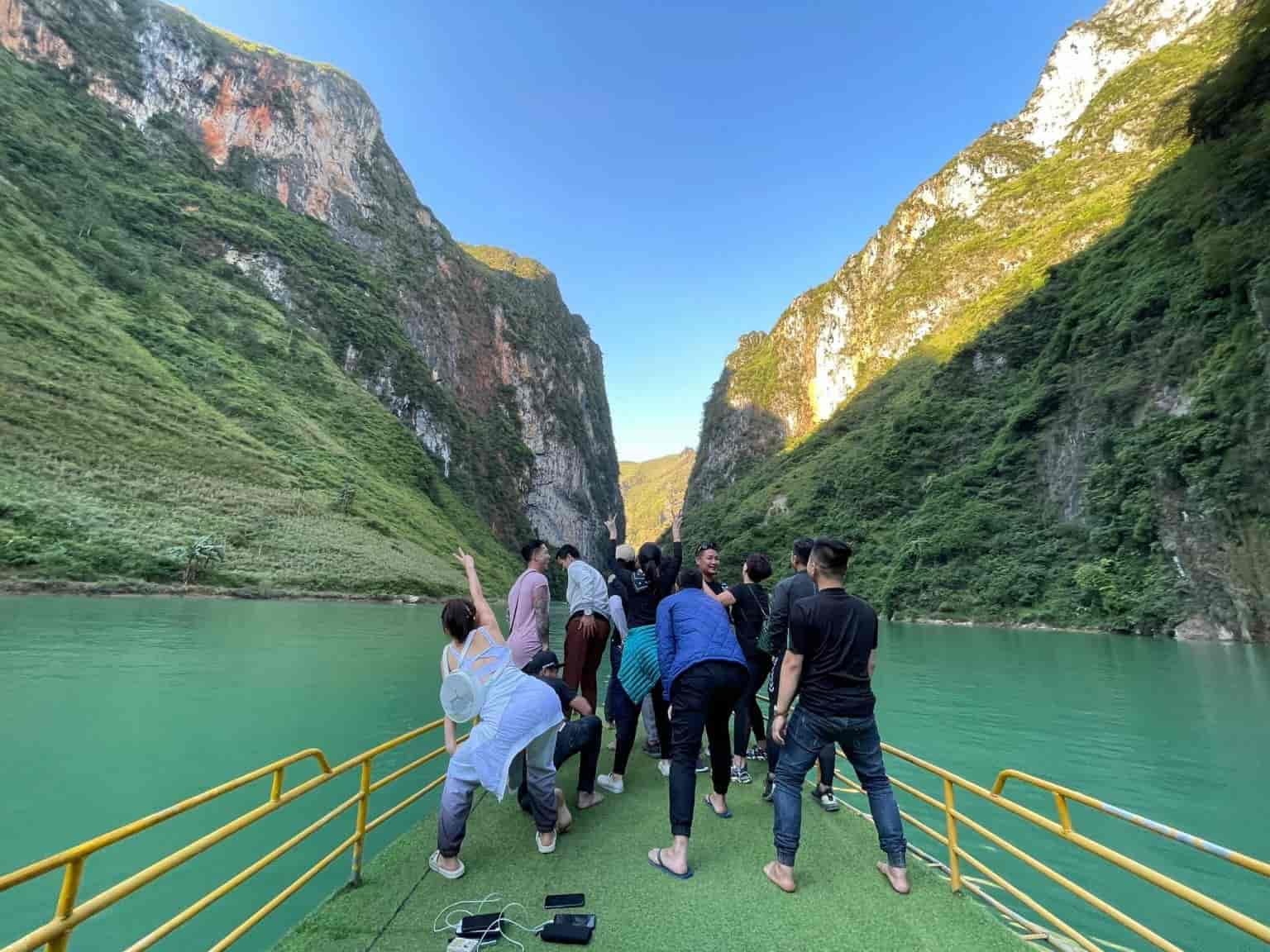
Swim and kayak
One of the ideal and enjoyable activities when traveling solo or with a group on the Nho Que River is swimming and kayaking. With calm, crystal-clear water, a gentle breeze, and your teammates, gently paddling a kayak is wonderful. It’s for relaxation, entertainment, and mutual understanding, enhancing the harmony between you and your group. This activity is also perfect for couples or corporate team-building programs. If you get tired of kayaking, you can jump into the river to enjoy the cool water of the Nho Que.
Take a boat trip along the Nho Que River
If you don’t enjoy swimming and kayaking to see the scenery, you can choose to take a boat trip for 130,000 VND per person. With this option, you don’t have to exert much effort, and you can still enjoy the scenery and capture beautiful photos.
Ride a motorbike to climb back up the hill
This is perhaps an ideal activity for adventurous travelers. Instead of drifting on the river and admiring the landscape from below, if you have steady hands on the handlebars, you can choose to ride a motorbike along the local people’s trail, an 8km path that is narrow, rugged, steep, and challenging to climb, parallel to the river below. Along this path, you will have a new perspective and a new feeling about the beauty of the Nho Que River. If you want to admire the beauty of the Nho Que River from a distance along this road but aren’t confident in your motorbike skills, you can choose to take a motorbike taxi for 100,000 VND one way.
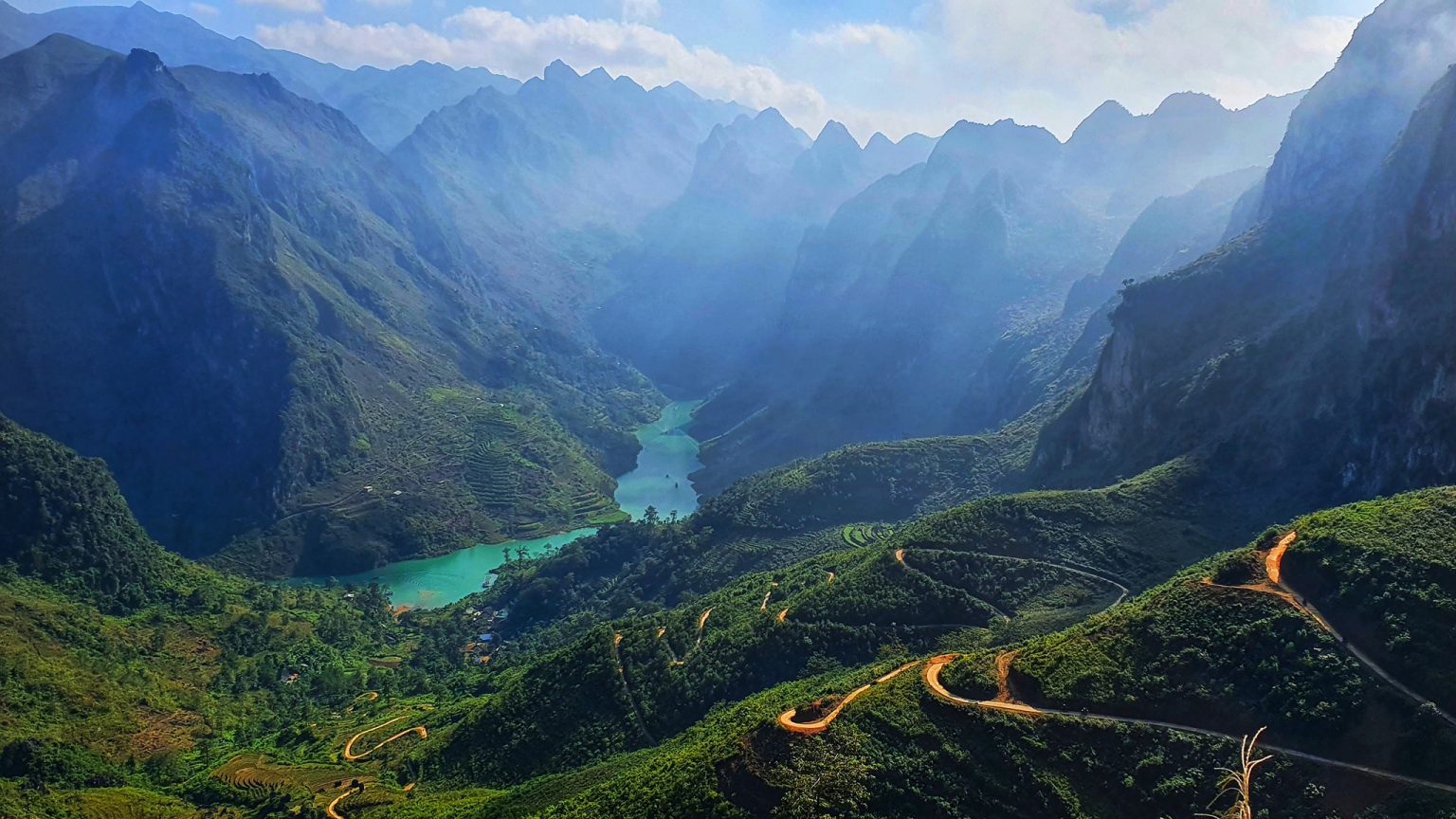
The Timeless Beauty of the Nho Que River
Where Does the Nho Que River Come From?
Hidden within the enchanting emerald waters lies a fascinating story about the birth of the Nho Que River. In the days when the mountain was still intact, water from above flowed down, causing considerable water retention. The water level kept rising on one side of the mountain while the other side, without a river, remained dry, cracked, and barren.
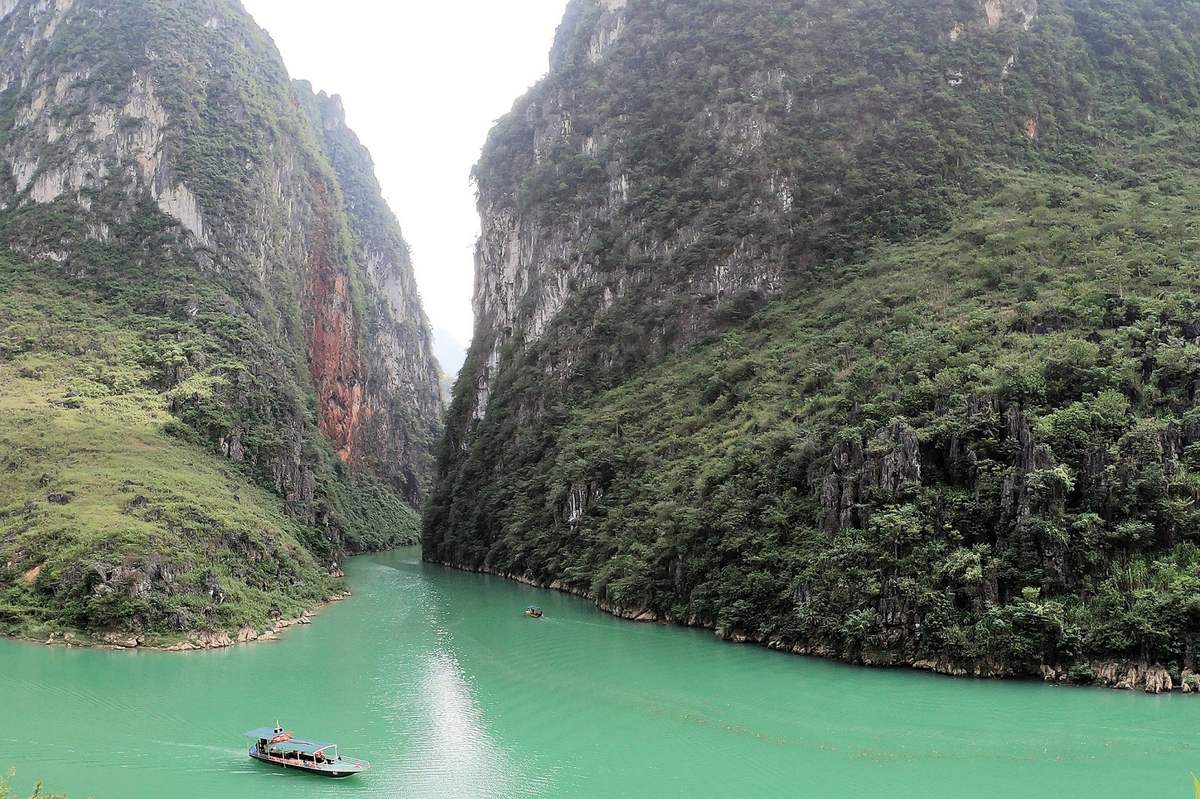
One day, the River God suggested to the Mountain God that he should move to the side to allow the water to flow freely, preventing accumulation and providing much-needed moisture to the arid areas. However, the Mountain God chose to remain still, pretending not to hear. When the River God conveyed this matter to the Jade Emperor, the Jade Emperor ordered the Mountain God to move to the side. Strangely enough, the Mountain God continued pretending to sleep, and he kept on sleeping season after season.
Then, one stormy night, thunder rumbled, and the Thunder God drew his sword, illuminating the darkness. A deafening explosion shook the earth, and the Mountain God split in two. The water began to flow freely, and wherever the water went, the land was covered in lush greenery. By morning, the once dry side of the mountain had transformed into a vibrant green landscape. Since then, water has continued to flow through the rocky terrain of the mountain, converging to form the Nho Que River, splitting the Sam Pun mountain range and the Ma Pi Leng Pass.
Geographic Location of the Nho Que River
The Nho Que River gorge is one of the geologically unique valleys with a 1-0-2 formation and is considered the deepest gorge in Southeast Asia due to its extremely treacherous terrain.
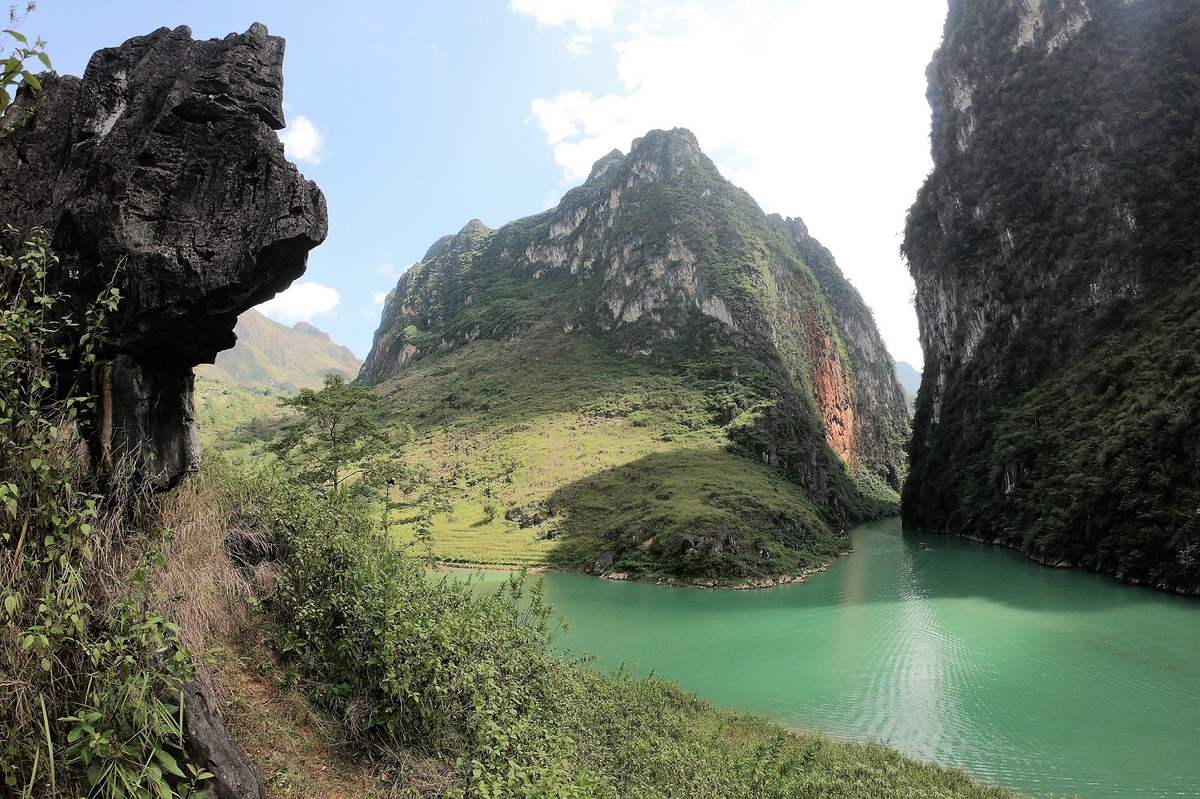
You can admire the winding Nho Que River when you gaze from the peak of Ma Pi Leng Pass amidst the layers of clouds, experiencing the grandeur of the geological formations, which contributes to the creation of the gorge.
Opportunities to travel along the Nho Que River allow you to witness towering cliffs on both sides of the river. Especially the sections that flow through sharp, colorful rock layers, forming white waterfalls, jagged rock formations, swirling waters both day and night.
The Nho Que River serves as a vital water source for irrigation of rice fields and crops along its banks, and it also provides the main source of drinking water for the local residents in the area.
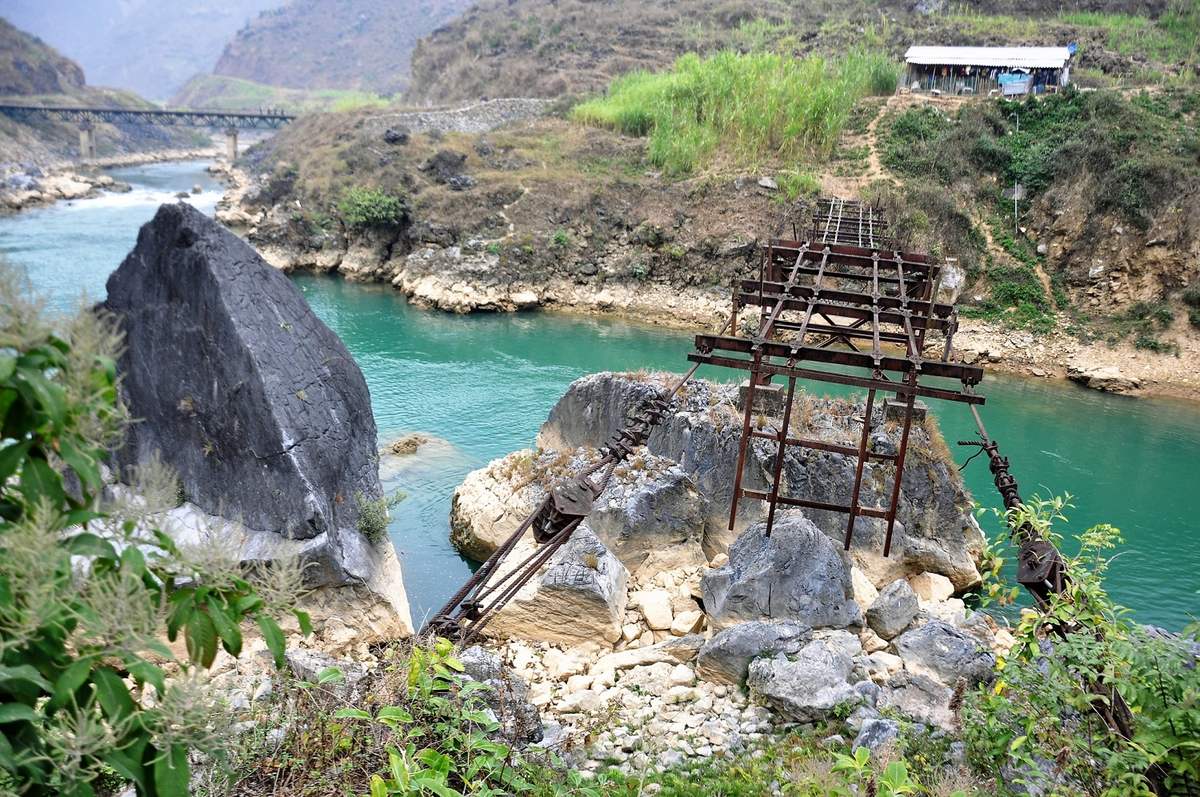
How does the Nho Que River evoke nostalgia?
The section of the Nho Que River that flows through the Ma Pi Leng Pass and the Tu San valley is considered to have a unique, majestic, and poetic landscape in Ha Giang, with its mesmerizing emerald waters.
Along the Happiness Road that runs parallel to the Nho Que River, you have the opportunity to explore the wild, rugged, yet gentle beauty of this azure river. After strong bends and a series of jagged, rocky rapids, the river becomes more tranquil. No more rushing water or the sound of the wind howling through the rocks, just the serene flow carrying the simple wooden boats downstream, making the Nho Que River smooth and vividly blue.
Over the centuries, the Nho Que River has maintained its distinctive green color, adorning the highland land at the northernmost point of the country. Its flow has become the source of life for many people and all living things on its banks, silently shaping the meaningful appearance of the nation.
Experience when traveling independently on the Nho Que River
Famous for its enchanting and mesmerizing beauty, the Nho Que River is a symbol of Ha Giang and one of the most beautiful rivers in the Ha Giang stone plateau. Whether you’re traveling with a group or going solo, there are some things to keep in mind.
First, to fully enjoy your trip, visit the Nho Que River in October or November. This is the best time to explore the river and admire the beautiful white buckwheat flower fields.
Second, if you wonder how to get to the Nho Que River, pay attention when traveling to the end of the Ma Pi Leng Pass. Try trekking about 1.5 km from the mountain side down the stone steps to the river below. The path can be treacherous because of the flowing water, which makes it slippery and you need to be cautious. Wear appropriate sports shoes and don’t carry any unnecessary items on the way down. The challenging path will be worth it as you will be rewarded with a breathtaking landscape reminiscent of a martial arts film.
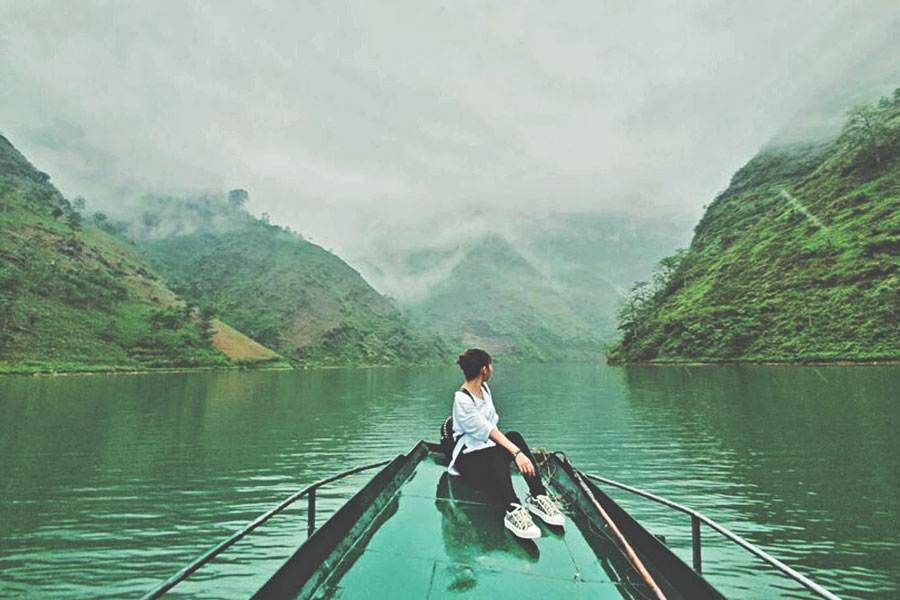
Third, once you reach the Nho Que River, you might wonder what activities to enjoy. The river is famous for its beauty, so take out your camera and capture the beautiful moments. You can also participate in fun activities like kayaking. This is a very enjoyable activity, and teamwork is essential for maneuvering the boat efficiently. The exciting part is that when you’re tired of paddling, you can jump into the river for a refreshing swim to cool off. If you prefer not to exert yourself, you can take a boat ride along the river for 130,000 VND per person. Alternatively, if you’re an adventurous biker with excellent riding skills, you can explore the Nho Que River from a different perspective by riding a motorbike along a challenging 8 km trail used by locals. This route allows you to admire the river’s beauty from the side, but you must be cautious as it is steep and winding.
By keeping these tips in mind, you’ll have a fulfilling and safe trip exploring the stunning Nho Que River in Ha Giang.
Things to Note When Traveling to Nho Que River, Ha Giang
- If you plan to stay by the Nho Que River until late afternoon, it’s advisable to stay in Dong Van Town to save travel time.
- If you are walking down to the boat dock, make sure you have enough drinking water, proper clothing, and safety shoes.
- The route to Nho Que River is not difficult, but the road can be challenging, so choose a driver with good driving skills.
- Motorbike taxis taking passengers to the boat dock cost around 150,000 VND for a round trip. It’s recommended to agree on the fare before getting on the bike.
- If you plan to rent a Kayak, make sure to contact the boat owner in advance.
- Groups of 1-2 people should consider sharing a boat or renting a Kayak to reduce costs.
- Keep the area clean and do not litter in the Nho Que River.
- Avoid rough play and pushing while on the boat.
- Do not give money to local children.
The Nho Que River is one of the famous tourist destinations in Ha Giang and is honored as one of the most unique geological valleys in Vietnam. Here are some travel experiences for Nho Que River in Ha Giang that any travel enthusiast should know to make their trip more complete and less cumbersome. We hope the experiences we’ve shared provide you with valuable knowledge and insights for a meaningful journey, helping you save costs and ensuring you won’t have any regrets.
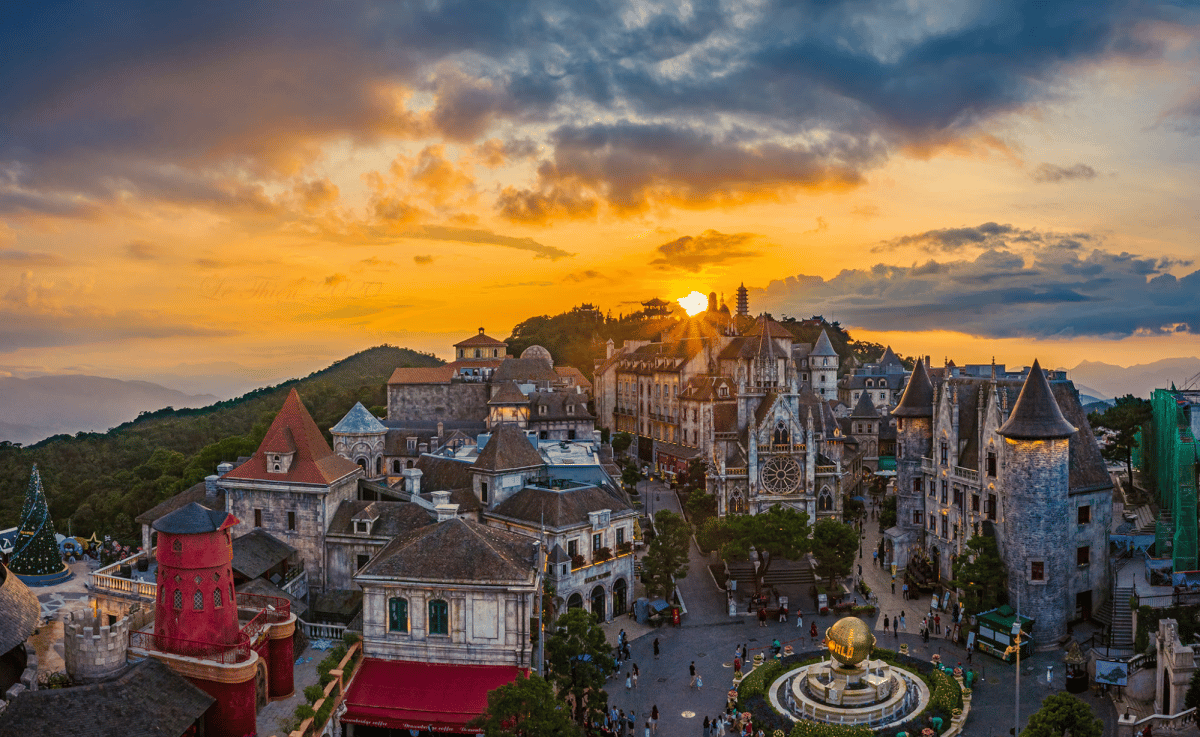

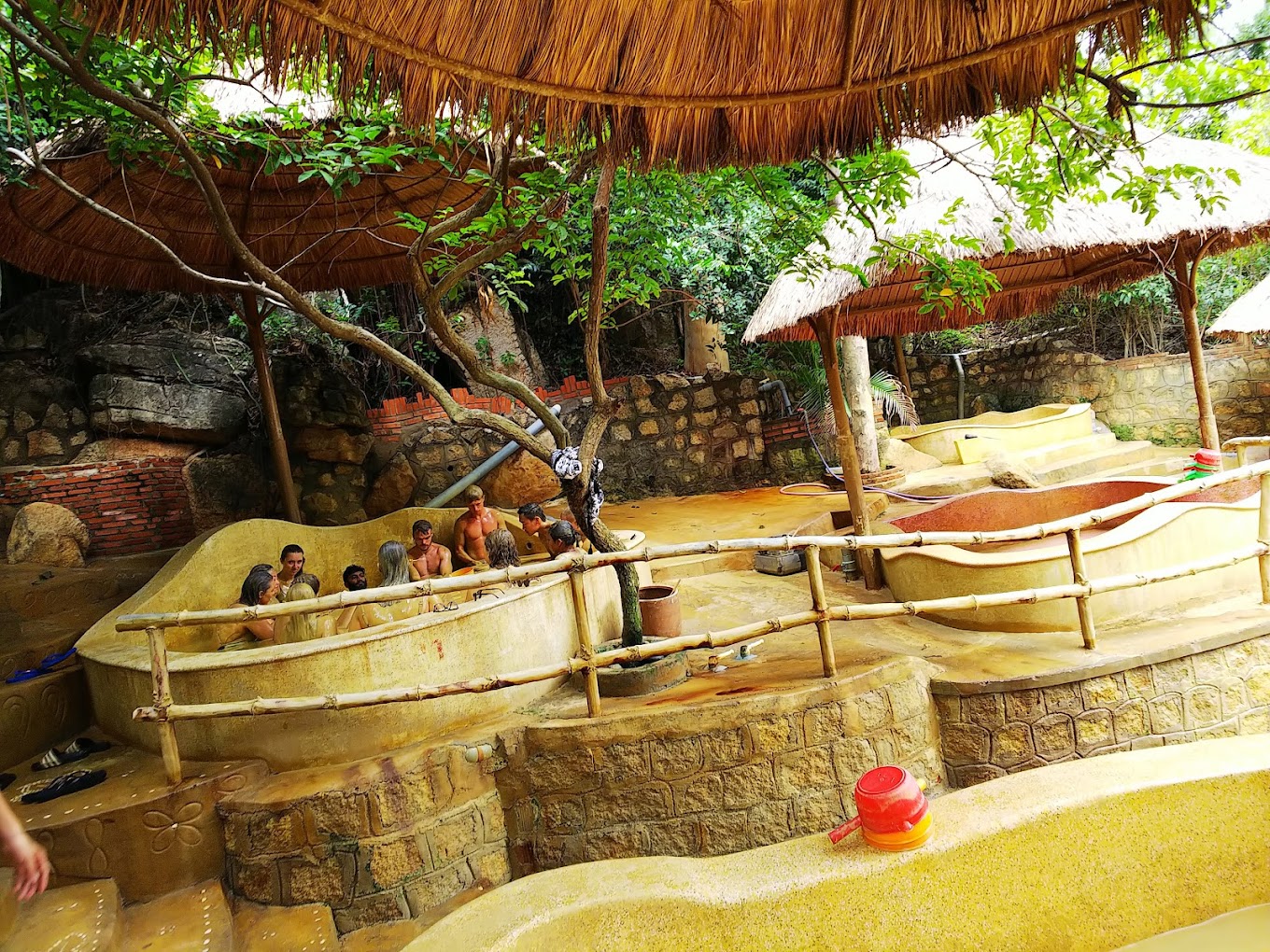
[…] Ha Giang tour will be incomplete without visiting the Nho Que River. When viewed from above, the Nho Que River looks like a ribbon of blue silk, meandering through the […]